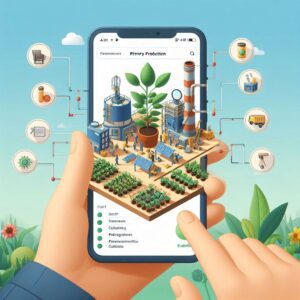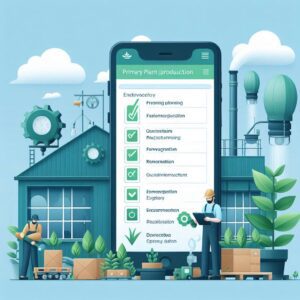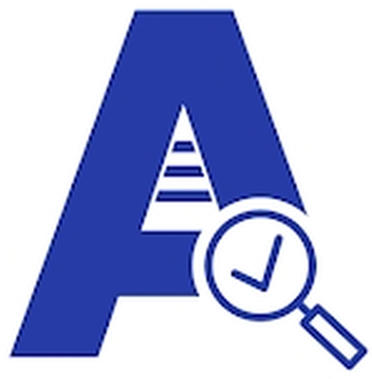SQFI Primary Plant Production Checklist
The Safe Quality Food SQFI Primary Plant Production Checklist is a tool used to assess compliance with the Food Safety Code for Primary Plant Production. This checklist ensures that plant-based food producers follow food safety and quality standards. Utilizing eAuditor Audits & Inspection helps digitize and streamline the audit process, allowing real-time tracking, documentation, and corrective action management.

Below is an outline of the key sections and items that should be included in an SQFI Primary Plant Production Checklist for use in eAuditor Audits & Inspection.
SQF Primary Plant Production Checklist Template for eAuditor Audits & Inspections
1. General Information
- Name of Facility/Farm
- Location
- Audit Date
- Auditor’s Name
- Scope of Audit (e.g., crop production, handling, storage)
2. Management Commitment
- Is there a documented food safety policy in place?
- Does senior management actively participate in the food safety system?
- Are roles and responsibilities clearly defined for food safety management?
3. Food Safety Management System
- Is there a documented and implemented Food Safety Management System (FSMS)?
- Are food safety plans (e.g., HACCP) in place for plant production?
- Are food safety records accessible?
- Is there a risk assessment procedure for primary production hazards?
4. Document Control and Record Keeping
- Are procedures and records maintained in an organized manner?
- Is documents control in place for every single version of documents?
- Are all critical records (e.g., pesticide application, harvesting logs) accessible?
5. Personnel Training and Competency
- Did personnel receive training in food safety practices, hygiene, and their role in the FSMS?
- Is there ongoing training for workers in critical control areas?
- Are records of training sessions and worker certifications maintained?
6. Good Agricultural Practices (GAP)
- Are facility document and follow GAP procedures?
- Is soil management conducted to prevent contamination?
- Is water used for irrigation or washing tested and safe?
- Are crop inputs (e.g., fertilizers, pesticides) stored and applied safely?
7. Water Management and Usage
- Does facility perform testing on production water for quality?
- Are procedures in place to monitor water usage, ensuring no contamination?
- Does facility manage waste-water disposal to avoid environmental hazards?
8. Harvesting and Handling Procedures
- Does facility maintain and clean harvesting tools and equipment to prevent contamination?
- Are procedures in place to ensure to handle harvested produce hygienically?
- Is every single container and vehicle for transporting harvested crops cleaned regularly?
9. Pest and Disease Control
- Is there an integrated pest management (IPM) program in place?
- Are pesticides and chemicals used appropriately and according to legal requirements?
- Are pest control measures documented and reviewed regularly?
10. Traceability and Product Identification
- Is there a traceability system in place for all inputs (e.g., seeds, fertilizers) and final products?
- Are procedures in place to recall products if needed?
- Are records maintained for product identification and batch tracking?


11. Allergen Management (If Applicable)
- Are allergen control measures documented and in place?
- Does facility minimize cross-contamination between crops?
- Are allergenic crops or seeds stored separately?
12. Hygiene and Worker Health
- Are hygiene practices clearly communicated to workers (e.g., handwashing)?
- Are sanitation facilities (e.g., toilets, hand-washing stations) available and regularly cleaned?
- Is there a process for managing worker illnesses to avoid contamination?
13. Waste and Environmental Management
- Are waste materials (e.g., plant debris, packaging) disposed of in an environmentally responsible way?
- Does facility manage composting and waste storage properly to avoid contamination?
- Does facility maintain records of waste management activities?
14. Storage and Transportation
- Does facility store crops under conditions that prevent contamination and spoilage?
- Are temperature controls in place for perishable products?
- Is every single transportation vehicle regularly cleaned and maintained?
15. Packaging and Labeling
- Does facility store and handle packaging material hygienically?
- Is packaging free from contamination and damage?
- Does facility label all packaged products with necessary information (e.g., product name, batch code, allergens)?
16. Risk Management and Emergency Preparedness
- Are contingency plans in place for emergencies (e.g., natural disasters, contamination events)?
- Is there a procedure for responding to incidents, including corrective actions and reporting?
- Does facility regularly review and update critical risks?
17. Audit Findings and Corrective Actions
- Summary of non-conformances identified during the audit
- Corrective actions for each issue
- Completion Date for corrective actions
- Final auditor recommendation for compliance
How to Implement the SQFI Primary Plant Production Checklist in eAuditor Audits & Inspection


- Create or Import Template: Build the SQFI Primary Plant Production checklist template in eAuditor Audits & Inspection, or import a pre-designed SQFI Primary Plant Production checklist template. Add customizable fields based on specific farm operations.
- Customize Fields: Modify the questions, sections, or areas of focus according to your production methods, types of crops, and risk factors.
- Conduct Digital Audits: Use the checklist to perform real-time audits in the field. Input data directly into eAuditor Audits & Inspection, attach images as evidence, and add comments where necessary.
- Issue Tracking and Reporting: eAuditor Audits & Inspection will generate reports automatically after the audit. eAuditor tracks Non-compliance issues and CAPA assignment to the responsible personnel for corrective action.
- Monitor and Review: Track the progress of corrective actions and monitor ongoing compliance with food safety standards using eAuditor Audits & Inspection’s dashboard and reporting features.
Using eAuditor Audits & Inspection for the SQFI Primary Plant Production Checklist not only helps ensure compliance with SQF standards but also provides a more efficient, paperless way to track audit performance, address issues, and maintain records for future inspections.
